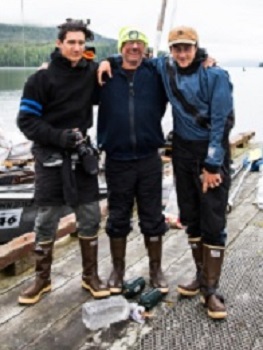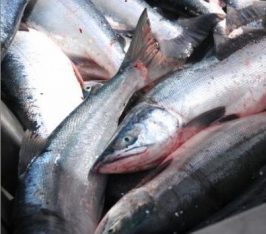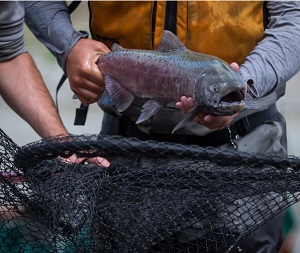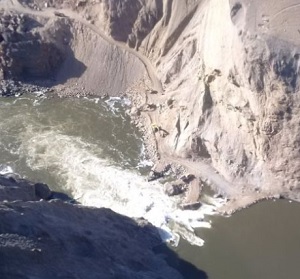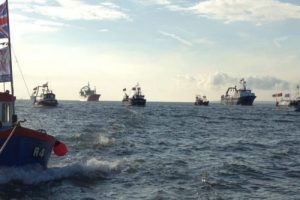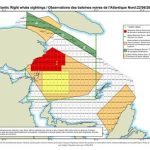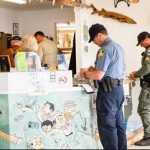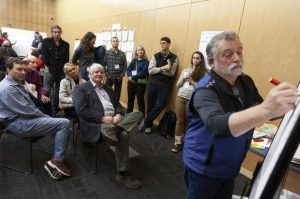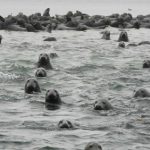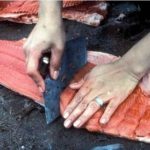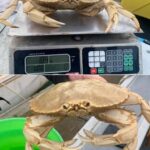Tag Archives: salmon
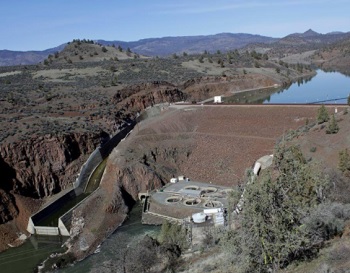
Plan will remove Klamath River dams, reopening the waterway along Oregon-California border
An agreement announced Tuesday paves the way for the largest dam demolition in U.S. history, a project that promises to reopen hundreds of miles of waterway along the Oregon-California border to salmon that are critical to tribes but have dwindled to almost nothing in recent years. If approved, the deal would revive plans to remove four massive hydroelectric dams on the lower Klamath River, creating the foundation for the most ambitious salmon restoration effort in history. >click to read< 12:16
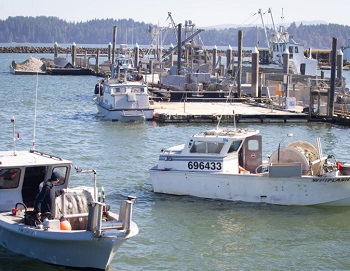
Coho swarm Willapa: Astounding run brings increased limits
An unexpectedly strong coho salmon return in the Willapa has fishery managers and biologists reassessing run size,,,. Willapa’s commercial gillnetters are hoping to get more fishing days this fall after early limits to avoid impacts on scarcer Chinook. Commercial fishermen are often the canary in the coalmine when it comes to reporting what’s occurring offshore. The first signs of a bigger-than-expected coho salmon run began showing up on the Port of Peninsula docks a couple weeks ago. >click to read< 18:28

Bristol Bay Fisheries Report: July 4, 2020
A big bump of fish hit the Naknek-Kvichak and Egegik yesterday — those fleets caught most of the bay’s daily harvest of nearly 1.2 million. Total harvest around the bay is now approaching 5 million. Escapement yesterday was 140,000, and 1.8 million fish have escaped around the bay this season. The total run is at around 6.8 million. The Nushagak district’s daily harvest was 60,000 yesterday, bringing the season’s harvest to,,, Breaking that down by river system, audio report, >click to read< 07:25

More restrictions for Fraser River chinook fishermen
All but one of 13 Fraser River chinook populations assessed by the Committee on the Status of Endangered Wildlife in Canada are currently at risk. New restrictions this year include maximum size limits of 80 cm in southern marine recreation fisheries to help mitigate risks to larger females, and an expanded fishing closure off the mouth of the Fraser River. Additional closures have been added in the Strait of Georgia and Juan de Fuca Strait for protection of the Southern Resident Killer Whales. >click to read< 09:35

Gary Griggs – Salmon and squid
Salmon and squid both came on the radar this past week,,, These two marine animals have both shared some top billings in their importance to California’s commercial fishery in recent years, although there are significant year-to-year fluctuations. Calamari or market squid have been the number one fishery in tonnage caught, year after year… until last year. In typical years, 70,000 to 118,000 tons (118,000 is the allowable total catch) would be brought to the docks by the squid boats, making up consistently two-thirds of the entire commercial catch. >click to read< 10:46
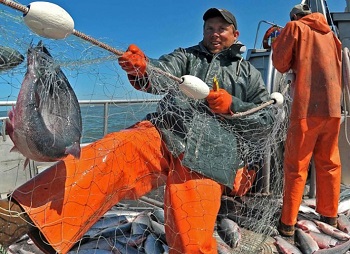
In This Remote Town Spring Means Salmon, and Thousands of Fisherman From Coronavirus Hot Spots
Later this spring, Alaska’s Bristol Bay will blossom into one of the largest annual salmon fisheries in the world. The regional population of about 6,600 will triple in size with the arrival of fishermen, crews and seasonal workers on jets but also private planes and small boats, many traveling from out of state. And yet the heart of the health care system in southwestern Alaska, in a corner of the state where the Spanish flu once orphaned a generation, is a 16-bed hospital in Dillingham operated by the Bristol Bay Area Health Corp. Only four beds are currently equipped for coronavirus patients. As of Wednesday, the hospital had a few dozen coronavirus tests for the entire Florida-sized region, tribal leaders said. >Click to read< 14:16
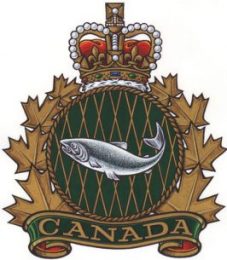
Fishery Mismanagement?: Research suggests DFO worsened impact of salmon fishery crisis
Unifor has released a new report that says artificially low catch limits over the past 25 years pushed the West Coast salmon fishing industry to the brink, leaving it unable to cope with the 2019 crisis. “The federal government created a commercial fishing economy so precarious that when the salmon collapsed this year, the industry went with it,” said Jerry Dias, Unifor National President. “Commercial salmon fishing may never recover.” >click to read< and to read A Report to Governments on the 2019 Salmon Season >click here< 13:18
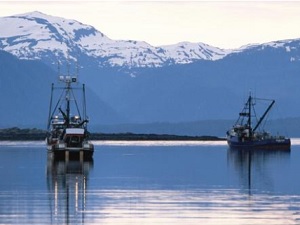
The little known United States and Canadian border war
For the past 116 years, a disputed passageway off the Alaskan coast has spurred a war between the two neighbouring countries. Though the US and Canada have the longest undefended border in the world, Dixon Entrance is one of four long-running border disputes between the friendly neighbours. The roots of the quarrel date back to the 18th Century; a time when the colonising stakeholders in the Alaskan Panhandle region (the narrow strip of mountains, fjords and channel islands bordering modern British Columbia) were England and Russia, followed by the US. >click to read< 17:37
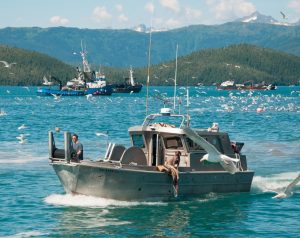
Prince William Sound season’s catch nears 56 million fish, statewide harvest now tops 201 million salmon
Statewide preliminary data compiled by ADF&G showed an overall harvest of 201 million fish, including 124.8 million pink, 55.3 million sockeye, 17.3 million chum, 3.4 million coho and 273,000 Chinook salmon. With the addition of some 100,000 fish last week, the 2019 Alaska commercial salmon season is nearly complete, noted Garrett Evridge of the McDowell Group, who compiles weekly commercial salmon reports in season on behalf of the Alaska Seafood Marketing Institute. >click to read< 10:47

Salmon Tales: Sex, myth and molecular genetics of an iconic fish
A sockeye salmon’s life ends right back where it began, culminating in an anadromous drama of sex, decay and sacrifice. Patty Zwollo says that it’s all part of sexual maturation in salmon: They swim up out of the Pacific into the same streams in which they were born and into the lives, literature and religion of the native peoples of the drainages. >click to read< 10:34
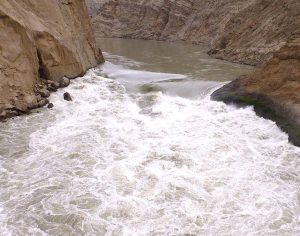
Salmon collapse hitting workers hard
Don Sananin has loved the sea and fishing since he started in the industry as a 17-year-old.,,,But after more than 50 years working as a commercial fisherman, the Burnaby man hasn’t seen a salmon season as grim as this year’s. Sananin, 70, who holds a licence for the area that includes the Fraser River to the west coast of Vancouver Island, hasn’t been out on the water yet. “There hasn’t been an opening,” he said. “The sockeye is the worst it’s ever been since the 1890s.”,,, “The impacts are on fishermen, plant workers, net menders, and reduction plant workers, from Lax Kw’alaams [in northern B.C.] all the way down to White Rock and all the places in between.” >click to read< 17:21
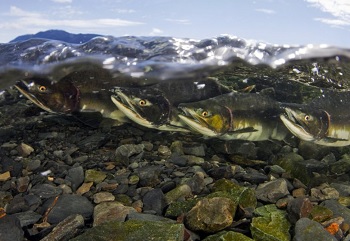
Bristol Bay Salmon Are in Hot Water
I’ve worked as both a journalist and a commercial fisherman for over a decade, participating in more than a dozen fisheries from Southern California to the western Gulf of Alaska. I’ve seen booms and busts over the years, and this summer the fishing in Bristol Bay was booming. Estimates say 56.3 million salmon returned to the bay’s rivers. While down from 2018’s record-breaking runs, with 62.3 million fish, Bristol Bay has so far bucked the trend of declining salmon runs seen in other regions. But all is not well. by Nick Rahaim >click to read< 09:43
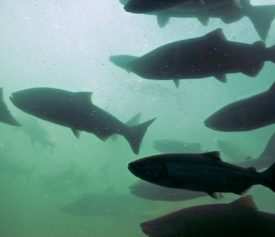
Opinion: Why Bonneville can’t save salmon
The Northwest is not winning the battle to save wild salmon and steelhead in the Columbia River. Although most of the 12 listed salmonid stocks in the basin demonstrated a weak upward trend for a couple decades, that progress has stalled. Total returns of salmon and steelhead passing Bonneville Dam last year slipped to the second-lowest level in the past 18 years, and spring Chinook returns were 60 percent of the 10-year average. by Tom Karier >click to read<10:34
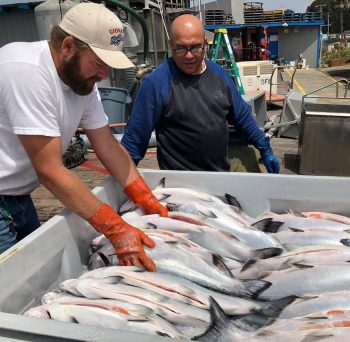
Epic catch brings tons of fresh fish to the Central Coast
Salmon are running in epic numbers this year off the Central Coast, and that means lots of fresh fish for commercial fishermen and hungry customers.
This year’s salmon season, which started commercially on May 1, is the best local fishermen have seen in 20 years. “It’s like Christmas for us,” DeGarimore said. “This is the biggest salmon catch we’ve had in the past two decades. We’re all really excited to see the boats coming in. Tourists are taking photos. Salmon are beautiful fish, and they make spectacular fillets. >click to read<15:14
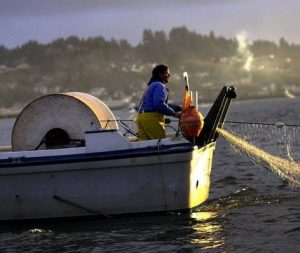
Commercial fishing isn’t the main threat to habitat
A recent letter wondered why Gov. Inslee would allow gillnetters on the Columbia River. The fact is, in the environment in which orcas struggle to survive commercial fishers are the easiest element to manage.,,, Gillnetters catch limited numbers of salmon. But land developers and homeowners can destroy an entire salmon run permanently. The pesticides, fertilizers, weed killers, moss removers, and deck waterproofing folks liberally use around the house and yard are absolute fish killers. Personal care products, pain medications, antidepressants and other popular pharmaceuticals are either disposed of or excreted into our sewage systems and flushed into the Salish Sea and Columbia River. >click to read< by Arthur Lynch, Bainbridge Island
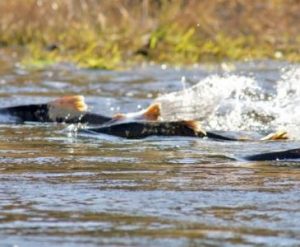
Northwest Dams to Spill More Water to Help Salmon & Orca
Dam operators will send more water spilling over the eight dams along the Snake and Columbia rivers in an effort to help young salmon survive the notoriously deadly trip to the Pacific Ocean. The spill management plan for 2019 and 2020 is a win for salmon advocates in a 17-year legal battle where federal judges have repeatedly told the government it’s not doing enough to prevent the extinction of salmon in the rivers of the Northwest. It also brings that litigation into alignment with the work of a Washington state task force determined to prevent the extinction of Southern resident killer whales whose survival depends on endangered Chinook salmon. >click to read<12:03

Farmers protest California water plan aimed to save salmon
Hundreds of California farmers rallied at the Capitol on Monday to protest state water officials’ proposal to increase water flows in a major California river, a move state and federal politicians called an overreach of power that would mean less water for farms in the Central Valley. “If they vote to take our water, this does not end there,” said Republican state Sen. Anthony Cannella. “We will be in court for 100 years.” Environmentalists and fishermen offered a different take on the other side of the Capitol to a much smaller audience. “For the 50 years corporate agriculture has been getting fat,” said Noah Oppenheim of the Pacific Coast Federation of Fishermen’s Associations. “Salmon fisheries have been tightening belts.” >click to read<13:17

Set netting is a ‘mud experience’ and these fishermen can’t get enough of it
Mud is the tie that binds all set netters together, but some are better than others at traipsing through the gloop. We found three fishermen who couldn’t stop gushing about it. Alana Kansaku-Sarmiento has left set netting (somewhat reluctantly, it seems) to drift with the fishing vessel Marion-Ruth.,, I love, for some reason, the mud. And that’s a very personal reason that I would love Nushagak Point and set netting, but I happen to be one of those people who just loves walking in it, picking fish in it, dragging s**t — stuff — through it. I don’t know what it is. >click to read<12:20
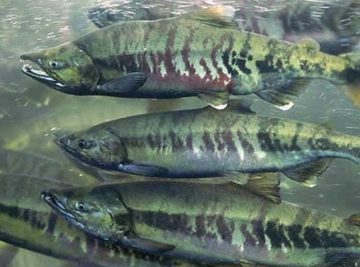
Prince William Sound commercial catch tops 3.5M fish
Commercial harvests in Prince William Sound have reached 3.5 million salmon, even as the surge in the catch in late June slowed somewhat in early July. Through June 10 fishermen delivered to processors an estimated 2,450,601 chums, 1,022,779 sockeyes, 18,461 pinks, 7,829 Chinooks and 459 silvers. Drift gillnetters in the Coghill district alone have brought in over 1.8 million fish, including an estimated 1.7 million chums, 155,704 reds, 1,959 humpies, 386 kings and 94 silvers. Purse seiners in the Montague district had,,, Statewide harvest updates provided by the McDowell Group in Juneau for the Alaska Seafood Marketing Institute show that through June 10 nearly 28 million salmon have been delivered to processors. >click to read<12:55
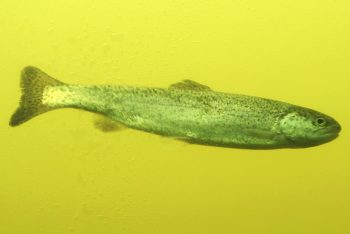
The politically unifying potential of salmon
If there is any issue Democrats and Republicans in Washington State should come together on, it’s salmon. Salmon play a major role in our state’s economy, wildlife diversity and cultural heritage. In Washington alone, salmon help support nearly 16,000 jobs and a $1.1 billion annual fishing economy. Salmon alone provide over 134 million dollars of economic output to Washington state each year. They’re also a keystone species to 137 other animals, including orcas and bears. Unfortunately, the lowest counts of Pacific Northwest salmon in history — and a 60 percent decrease in the population since 1984 — now significantly threaten the essential role of salmon. >click to read<08:58
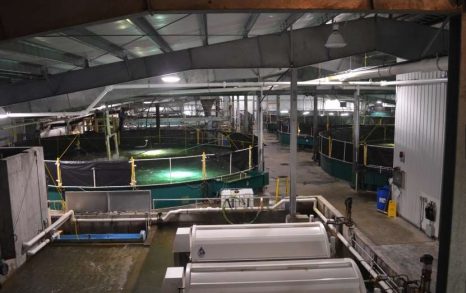
This Canadian First Nations group wants you to buy salmon raised on land
Alert Bay isn’t exactly a premier destination on British Columbia’s rugged Pacific Coast. On this winter day, there are more crows than people on the town’s wooden sidewalks, and most of the few small businesses near the waterfront are closed for the season. The biggest building is an abandoned salmon cannery, a reminder of what used to be here. It’s a past that Bill Cranmer remembers well.,, For centuries, he says, salmon sustained the Namgis’ lives and culture.,, Cranmer says if he and his Namgis First Nation people had their way, they’d get rid of open-water salmon farms. But they can’t, so they’re trying another idea for rebuilding a salmon economy for their community. They’ve built their own salmon farm — on land. >click to read<15:26
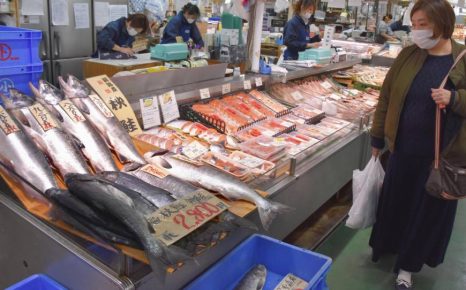
Hokkaido: Poor catches inflate salmon and saury prices ahead of year-end holidays
Poor catches for salmon and saury in the North Pacific have caused prices to spike across Japan as the year-end shopping season begins. In Hokkaido, which accounts for 70 to 80 percent of the nation’s autumn salmon catch, this season’s haul fell by more than 30 percent in the period ended Nov. 10, dropping to around 15.3 million fish, according to the prefecture’s fishery management division.,, In addition, fishermen are struggling with poor catches of saury, a slender but fatty fish popular as an autumn delicacy. click here to read the story 14:48

Record Chinook Salmon, Steelhead Returns Reported on Mokelumne River
For many years after Camanche Dam was built, the Mokelumne River, a major tributary of the San Joaquin River and the Delta, hosted small runs of Chinook salmon. The historic runs of steelhead after the construction of the dam averaged only 100 fish and no steelhead returned to spawn many years. But both steelhead and salmon runs have rebounded in recent years, due to a number of factors. In welcome good news for Central Valley salmon populations, the California Department of Fish and Wildlife (CDFW) and the East Bay Municipal Utility District (EBMUD) report record fall spawning returns of Chinook salmon and steelhead to the Mokelumne River, a tributary of the San Joaquin River.,, The hatchery has received 13,799 adult salmon to date—compared to 4,129 at this point last year—and is expected to break the record return of 18,000 in 2011. click here to read the story 20:33
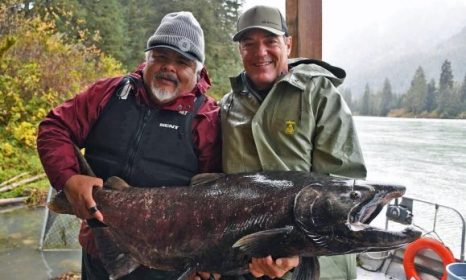
Whopper of a salmon caught in B.C.! – Percy Walkus Hatchery catches fish as part of its conservation program
Volunteer fishermen with a hatchery in central B.C. found themselves one big salmon last month The Percy Walkus Hatchery caught the massive chinook along the Wannock River, about 80 kilometres southwest of Bella Coola. It weighed more than 50 pounds. It was one of 94 salmon caught as part of an “egg take” — a conservation program that ensures the strongest chinook gene pool survives. Volunteers harvest the semen — known as milt — along with eggs from the strongest broodstock fish, which are fertilized and planted in the nearby hatchery. More photo’s, click here to read the story 10:09






